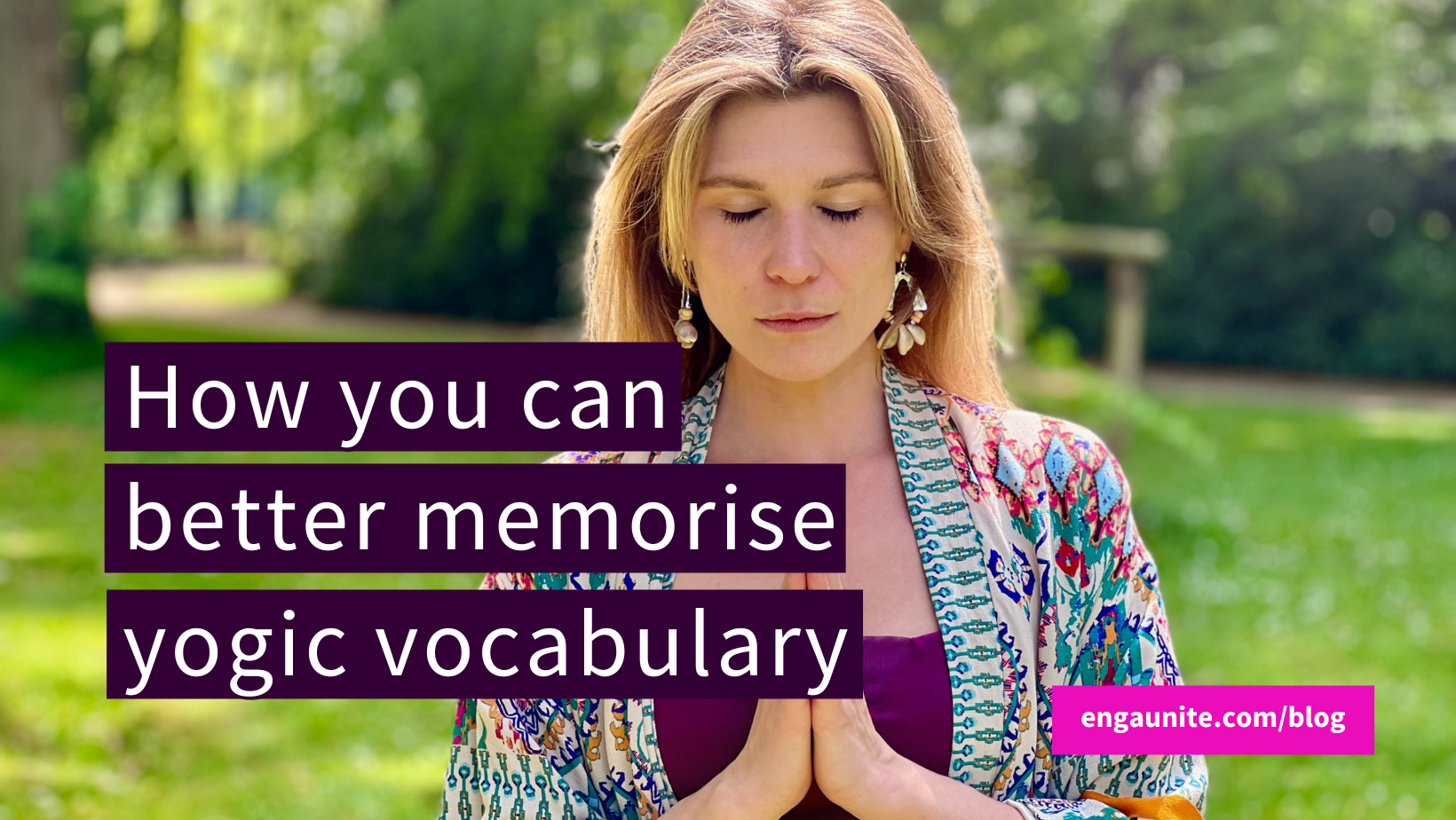Most language learners say that one of the most challenging things about learning a language is memorising new vocabulary. People have diverse opinions on this. Some argue that it’s due to the information we already store in our brains. Others say that they’re too old and only young people can memorise well. It may also be a lack of concentration that makes you lose focus. But I believe, it’s the standardised study techniques that aren’t working for you. In this blog, I’m going to explain how you can better memorise yogic vocabulary.
What is memorisation?
The human mind is fascinating. Sometimes you remember something random a friend told you ten years ago, and sometimes you finish reading a paragraph of a book to realise you weren’t even aware of what you were reading. The Cambridge dictionary defines memorisation as the act or process of learning something so that you will remember it exactly. According to Rick Huganir, Ph. D., this is not a simple task. He claims memorisation is a biological process. He explains that when we learn even the simplest thing, we form neuronal connections called synapses. The more we practice or repeat what we learn, the stronger the synapses get. Therefore, the information will stick to your brain, and if you do not practise or repeat it, the synapses will get weaker. Resulting in forgetting the information you’ve once had integrated.
Understanding your learning style can help you memorise vocabulary better
Forgetting things or not memorising them is not as bad as you may think. It’s just your brain doing its job selecting the information it considers important and discarding what it believes to be irrelevant.
After years of teaching English to many different personalities and people from different cultural backgrounds and observing these techniques in practice, I know it’s not you or the method that doesn’t work, but you’re most likely using a method that doesn’t match your learning style.
However, it’s not your ‘fault’ to not memorise well. Our standardised school systems have taught us a lot of myths regarding memory, which have led us to believe we are not good enough and that we’re bad at memorising in general. Plus, when you try to learn something and find it difficult, you may feel stressed. The stress hinders your ability to focus and concentrate, and this can turn into an infinite vicious cycle. So, if you want to learn how to memorise better for your personal or professional language goals, the first thing you have to do is accept that we all learn and process information in different ways. Next is uncovering your learning style so that you can choose the techniques that work for you personally and will help you process and memorise (new) information more easily.
What’s your learning style?
Learning about learning styles could give you a great insight into why learning in the past could have been challenging. Predominant educational systems around the world, the typical classroom setup and environment do not benefit all types of learners in the same way. Unfortunately, although often unintentionally, they are not inclusive of all types of learners. That’s why some of us find it hard to learn and memorise information through the traditionally taught methods and techniques.
Now that you know that when you’re struggling to retain information or memorise something new, it’s key to uncover your own learning style, let’s have a look at some learning styles to find out what yours is and how to find memorisation techniques that suit you personally.
VISUAL
Visual learners find it easier to learn by looking at pictures or images. They tend to close their eyes to remember for example shapes, colours, or location of things. Effective memorisation techniques for visual learners are flashcards, imagery, connecting mental images and symbols and colour coding things.
KINAESTHETIC
This style is also called tactile learning. Kinaesthetic learners use movement and often want to touch material in order to memorise it. Kinesthetic learning involves a lot of hands-on experience, think of for example, touching or moving the body parts of which you want to learn their vocabulary. Effective memorisation techniques for kinaesthetic learners are: acting it out, the mirror technique and even dancing!
AURAL
This style is also known as auditory learning. Aural learners prefer to learn by listening to information. They love listening to music, podcasts and often read aloud to memorise new things. Effective memorisation techniques for aural learners are: reading out loud, recording yourself speaking and then listening to the recording, or using music, lyrics and rhymes to memorise new material.
SOCIAL
Social learners find it easier to learn through social interactions. They easily learn by participating in group activities. They exchange ideas with each others and learn by conversing. Effective memorisation techniques for social learners are: studying or working in teams, group discussions, dialogue and conversation.
SOLITARY
Solitary learners prefer to work independently. This style is also called intrapersonal learning. They feel more comfortable studying in quiet places where they usually have the ability to concentrate well. They are known for keeping journals, setting goals and plans for self-analysis. Whatever study method they use such as reading out loud, watching videos or listening to audios, they prefer to do it alone. Effective memorisation techniques for solitary learners are: independent study, using writing, reading and observation in secluded places.
VERBAL
Verbal learners are also called linguistics learners and use language to learn. So it won’t surprise you that these people naturally also have the great ability to learn foreign languages. They also like to explore different ways to use language. Effective memorisation techniques for verbal learners are using rhymes, wordplay and acronyms. They love to read, and often write detailed summaries, make use of bullet points or even write their own stories.
LOGICAL
Logical-mathematical learners use numbers, sequencing, abstract visual information and reason to learn. Effective memorisation techniques for logical learners are: chunking information into charts and graphs, categorisation or classification, and the use of visual materials.
It is worth mentioning that you may identify with more than one learning style, but there’s usually one that you’ll feel most drawn to.
At Enga Unite, we pay a lot of attention to these types of learners. Especially since our community is international and comes from many different educational backgrounds, we focus on making our resources and learning materials as accessible as possible. This is why we intend to equally focus on all the learning styles, in order to provide equal learning opportunities to all our (future) students, including you!
In our blog ‘Your Learning Style is Unique’, you’ll find various quizzes to help you discover your learning style. So head over to the blog and take the quiz.
Very soon, I’m launching the Yoga Vocabulary Builder. This builder is designed to help you expand your knowledge of yogic terms and expressions so that you can cue effectively and offer well-rounded yoga classes in English. The interactive dictionary helps you understand words in context and unlearn inappropriate words and phrases such as non-inclusive language and out-dated cues. All of that according to your learning style, providing memorisation techniques that suit you personally.
On top of learning the language you need for your teaching purposes, you’ll receive 3 hours of video training on how to recognise your learning style, memorise better, and optimise your study techniques for an effective learning journey. You can check out the Yoga Vocabulary Builder.


